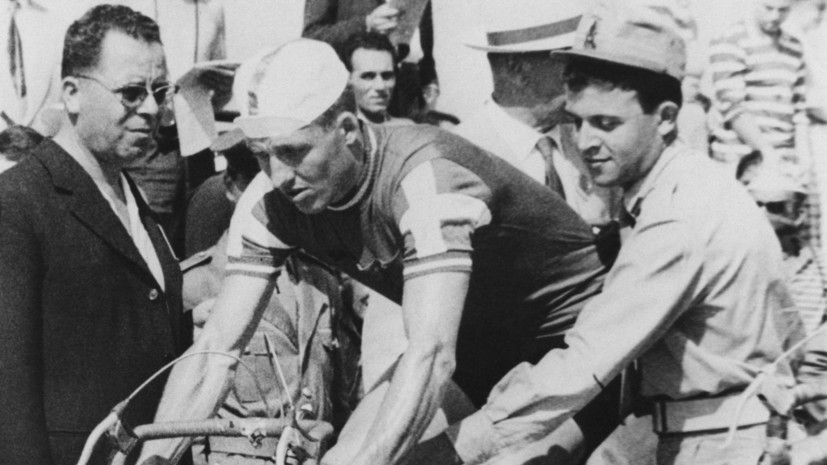Exactly 60 years ago, Danish cyclist Knud Enemark Jensen died during the Olympic Games in Rome. He died while racing after feeling ill and falling off his bike. Speculation that the athlete took doping before his death and died because of it gave a powerful impetus to the creation of the entire anti-doping system in world sport.
Jensen was born in Aarhus in 1936. After moving to Copenhagen, he married the niece of two-time Olympic champion Henry Hansen and became a promising cyclist. He joined the Danish national team to participate in the Olympic Games in Rome and on August 26 went with his partners to the start of the team road race.
The conditions in which the race took place between Rome and Ostia were unbearable. At some point, the air temperature exceeded 40 ° C. The participants had to overcome a distance of 100 km, and not everyone coped with this task.
In the middle of the journey, the Dane Jorgen Jorgensen felt ill and had to get off. Thus, he did not leave the partners the right to make mistakes - they could no longer stop, otherwise the team's result would not have been counted.
Closer to the finish line, Jensen complained about his health. He began to lose control of the bike and lag behind others. To keep the race going, the two remaining partners Wagn Bangsborg and Nils Bounsø surrounded Jensen on both sides and held him with their hands. But this did not help Knud. Finally, he fell off his bike, fell to the ground and hit his head.
He was taken to a medical tent, which was unventilated and extremely stuffy. Doctors tried for two hours to revive Jensen, but he died.
Jensen became the second and still the last athlete to die right during the Olympic competition. Before him, this happened with the Portuguese marathon runner Francisco Lazaro in 1912, who rubbed himself with wax so as not to sweat during the race, but thereby only heated his body to a critical temperature. In 2010, the sports world was also shocked by the death of Georgian luge Nodar Kumaritashvili, but he crashed during a training run, not during the competition itself.
Jensen's death was suddenly shrouded in a series of myths and legends. The media immediately published statements from the Danish coach Oluf Jorgensen that he allegedly gave his athletes the drug roniacol, which dilates blood vessels. However, he soon refuted his own words. Danish cyclists also refused to admit they were taking any medication to improve their performance.
Subsequently, the version began to spread that Jensen allegedly used amphetamine. Nowadays, this stimulant is a doping and is prohibited for use if there is no doctor's prescription for its use. But at that time, the fight against doping did not exist, and the use of amphetamine was common in various sports, including cycling.
Officially, the use of any drugs, the negative effects of which could lead to the death of Jensen, were not reported. The Italian doctors who performed the autopsy concluded that heatstroke was the cause of the athlete's death, and no foreign substances were found in his body.
At the same time, the full report was not publicly made public and was intended only for the family of the deceased, which is why the version about the possible role of doping in Jensen's death continued to live. She was also supported by the allegedly made later confessions of one of the doctors that amphetamine was still found in the blood of a cyclist.
The version that Jensen died due to doping was maintained at the highest level. This was mentioned in the documents of the International Olympic Committee, for some time information about this was on the official website of the World Anti-Doping Agency, and the page of the International Gymnastics Federation still claims that amphetamine was found in Jensen.
This incident gave impetus to the start of the fight against doping in world sports. In 1964, the IOC condemned the use of various drugs to improve performance and announced that it would fight and punish delinquent athletes. Already at the Tokyo Olympics, the first doping control was carried out, which today is an integral part of sports.
The death of Jensen, which continued to be attributed to prohibited substances, became the rationale for the need to fight doping. If not for this incident, the sport could have taken a completely different path of development.

